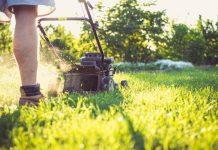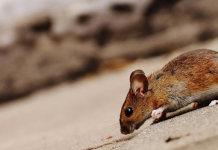Without bees, the human race is doomed. That might sound dramatic, but think about this: bees are responsible for 30 billion dollars of revenue thanks to their work pollinating crops that keep us alive.
This means that the plants we eat wouldn’t exist in the quantity we need to sustain the human population. Not only that, but animals that eat bees would die, animals that eat plants pollinated by bees would die, etc (remember the food chain from 8th-grade science?).
The worst part is that we are getting close to the total extinction of bees. What can you do to help prevent this from happening?
You can make a huge impact by simply creating a bee garden in your own yard, on your patio, or even just on your windowsill!
Keep reading for tips on how to create the perfect bee garden, what plants bees love, and more!
Table of Contents
Plants That Bees Love
While bees can and will visit almost all types of flowering plants, there are definitely certain types of plants and flowers that they prefer that can attract even more of them to your garden.
The specific types of flowers you plant will depend on where you live, the local varieties you have, and the condition of your gardening area (are you in a moist area? Very dry? Dusty? etc).
Let’s go over a few general flower types that will be successful in most climates:
Large Landing Pad Flowers
Some bees are called “hovering pollinators” meaning they don’t need to land on the flower to get the nectar. However, other common bees, especially the large bumblebee, need to have a sturdy area to land in order to get to the flower’s nectar.
Make it easier for the bees to do their job by getting plants/flowers that have a large landing area for these little guys to get to work.
Some great options for these types of bees are sunflowers, coneflowers, and lupines are some great choices.
Many Small Flowers on One Plant
Bumblebees are some of the largest out there, but there are tons of species of tiny light little bees that prefer to tackle smaller flowers. Smaller bees like this can’t reach their smaller tongues into flowers with deep pockets or that are too large, so providing a plant with a cluster of small flowers on one plant will attract these guys.
Some choices for these are goldenrods, black-eyed Susans, milkweed, oregano, Shasta daisies, and bergamot.
Blue Flowers
Research shows that while bees like all types of flowering plants, they do prefer blue/violet colored flowers. Scientists believe that this is because these types of plants are usually nectar-rich, so bees associate the color with a large amount of nectar.
Hollow Stem Flowers
Bees use plants and flowers for more than just nectar. Some bees find shelter and build nests inside plants.
Provide them with an area to set up camp by adding some hollow-stemmed plants to your garden. These could be coneflowers, raspberries, goldenrods, certain types of grasses, etc. Notice how a few of those are ideal for attracting pollinators in the first place, so it’s a win-win!
Flowers All Year
Peak bee season is in between March and October. However, that doesn’t mean that you don’t want to provide for bees all year!
Make sure your garden is blooming at all times of the year. Have certain flowers that bloom in summer, spring, fall, and winter to make your bee garden useful all year.
Arrangements
Leave certain areas of the ground open to allow bees to burrow and shelter in the ground. If you’ve added hollow-stemmed flowers to your garden, that also helps the bees make nests and shelters.
Some bees like to nest in wood, so you could leave some piles of branches or specially made pieces of “nesting wood” for the bees to make a home in.
Water
Bees need water too! Make sure there are areas in the garden that water can pool. This can be as simple as leaving little divets and holes in the garden area, or you could construct a “bee bath” with a small container filled with water.
Bees can’t swim though, so make sure to put a few leaves or small sticks in the container so the bees have little landing areas for while they’re drinking.
Avoid Pesticides and Herbicides
You might want to use pesticides in order to keep other bugs and pests out of your precious garden. But pesticides are one of the main things killing bees at an alarming rate.
Pesticides and herbicides can also be toxic to children and animals that come into contact with those chemicals.
Natural predators will keep unwanted pests away. You can also look into natural pest deterrents that won’t affect the bees.
Want to Try Your Hand at Beekeeping?
If you really want to step it up a notch, you can try out beekeeping. This useful guide goes over everything you’ll need in order to become a great beekeeper.
Combine beekeeping with a bee garden to work towards increasing the natural bee population in your area.
Creating the Perfect Bee Garden: Final Thoughts
Making your own bee garden isn’t just going to help the bees. It’s also a fun family project that will teach you and your family about how your actions are impacting the natural world.
Want to make your bee garden extra special? Check out this article for 6 ways to DIY an amazing backyard garden.



















